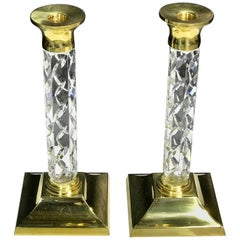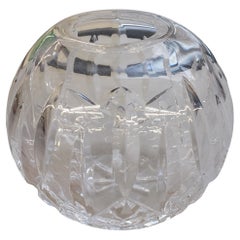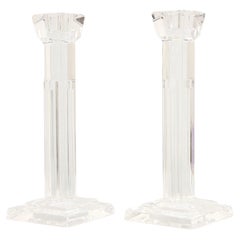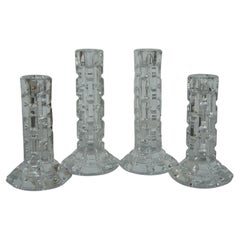Retro Waterford Crystal Candlesticks
Late 20th Century European Mid-Century Modern Retro Waterford Crystal Candlesticks
Crystal, Brass
Late 20th Century Irish Retro Waterford Crystal Candlesticks
Crystal
Late 20th Century Modern Retro Waterford Crystal Candlesticks
Crystal
Recent Sales
Late 20th Century Irish Modern Retro Waterford Crystal Candlesticks
Crystal
Late 20th Century Modern Retro Waterford Crystal Candlesticks
Crystal
1990s American Neoclassical Retro Waterford Crystal Candlesticks
Crystal
1990s Irish Modern Retro Waterford Crystal Candlesticks
Crystal
1980s Northern Irish Baroque Revival Retro Waterford Crystal Candlesticks
Crystal
People Also Browsed
Late 20th Century Hollywood Regency Retro Waterford Crystal Candlesticks
Crystal, Brass
Mid-20th Century Irish Mid-Century Modern Retro Waterford Crystal Candlesticks
Crystal
Early 19th Century Irish Retro Waterford Crystal Candlesticks
Crystal, Bronze
1980s Irish Mid-Century Modern Retro Waterford Crystal Candlesticks
Crystal, Brass
Late 20th Century Irish Victorian Retro Waterford Crystal Candlesticks
Crystal
Mid-19th Century English High Victorian Retro Waterford Crystal Candlesticks
Other
19th Century Irish Victorian Retro Waterford Crystal Candlesticks
Crystal
Late 20th Century Retro Waterford Crystal Candlesticks
Crystal
1980s Irish Mid-Century Modern Retro Waterford Crystal Candlesticks
Crystal
20th Century British Georgian Retro Waterford Crystal Candlesticks
Crystal
Waterford Crystal for sale on 1stDibs
Among glassware aficionados, the name Waterford has earned a place of eminence — both for antique crystal vases, glasses, chandeliers and serveware made by the original Irish company in the 18th and 19th centuries, and for new versions of the firm’s classic patterns produced after its rebirth in the 1940s. With either iteration, Waterford is a byword for traditional elegance.
Waterford crystal was born of a tax loophole. In 1783, business-minded brothers George and William Penrose founded the Waterford Glass House in southeastern Ireland because Irish glass was exempt from steep British import duties. The two wanted to make fine-quality wares and hired artisans from England, including master glassmaker John Hill. The factory’s flint glass — a precursor to lead crystal — soon won a clientele among British and continental aristocrats.
One of Hill’s aesthetic innovations was to polish glassware after a pattern was cut, to buff off the resulting frosted surface. The look became a Waterford trademark. Through the fame of its wine goblets, claret jugs and decanters, the firm continued to win honors at the many industrial expositions of the early Victorian era. But over those years, higher and higher luxury excise taxes were placed on fine crystal. Waterford products became prohibitively expensive, and the company closed in 1851.
The brand’s renown was still intact when it was revived in 1947 by a Czech glass manufacturer named Charles Bacik, who moved to Ireland after the Communist takeover of his country. For centuries, the region now called the Czech Republic had been the great glassware center of Middle Europe — the source of crystal to legendary Viennese glass design firms such as Lobmeyr and Bakalowits. So Bacik brought with him the master glassblower and designer Miroslav Havel.
In Dublin, Havel studied the old Waterford style book archives kept in the National Museum. He used these classic patterns as the basis for new ones such as Lismore, with its crosshatching and flame-like vertical cuts, and Alana, with its heavily textured diamond cuts. Past and present are thus linked at Waterford.
Introduced in 1991, the Marquis by Waterford range of vases, bowls and other wares were priced for everyday use and were intended for use in modern homes. It was the first new brand debuted by the company in what was then its more than two-century history.
As you will see on 1stDibs, antique or recently made, Waterford crystal is the essence of refinement.
Find Waterford crystal vases, serveware and other collectibles for sale on 1stDibs.
Finding the Right Candlesticks for You
Vintage, new and antique candlesticks and candleholders do not simply infuse a dining room with a soft, warm glow. They also add dimension, conjure drama and draw attention to a table or mantel. Despite their practical origins, today, decorative candlesticks and their holders elevate spaces by matching interiors or adding color and bold shapes.
For those who enjoy the rich pageantry of the Old Masters, candlesticks in the Baroque and Rococo styles offer intricacy and opulence. The design of Baroque candlesticks — thanks to the influence of the Catholic Church — often boasted complex shapes and featured biblical figures. While bronze candlestick holders have a long history dating back to the ancient world, many 17th-century candlesticks were made of luxurious silver. Armed with a disposable income and a desire to show off their status, the newly emerging middle class acquired candlestick holders as intricate art pieces, beautiful and opulent in their own right.
The Art Deco movement of the early 20th century saw candlesticks designed with simplicity and symmetry in mind. Art Deco candlesticks boast all manner of forms, ranging from sleek curves to bodies of ribbed crystal or bronze that take the shape of animals.
While some 20th-century-era candlesticks are akin to statues in their grandeur, these decorative items became especially fashionable in the mid-20th century for atmospherically illuminating dinner tables. Mid-century modern candlesticks frequently epitomize the streamlined functionality that we’ve come to associate with the era.
Find a comprehensive collection of vintage, new and antique candlesticks on 1stDibs.
- 1stDibs ExpertNovember 26, 2024To identify Waterford glass, use its acid markings. You may need to use a magnifying glass while holding your piece up to the light to read them. Waterford began using acid marks in 1950 and has marked pieces with Gothic lettering, script word marks and its seahorse logo over the years. Older pieces usually had foil labels, which may have come off over the years. If your piece is unmarked, a certified appraiser or experienced antique dealer can help you determine if it's a Waterford. Find a wide range of Waterford glassware on 1stDibs.




